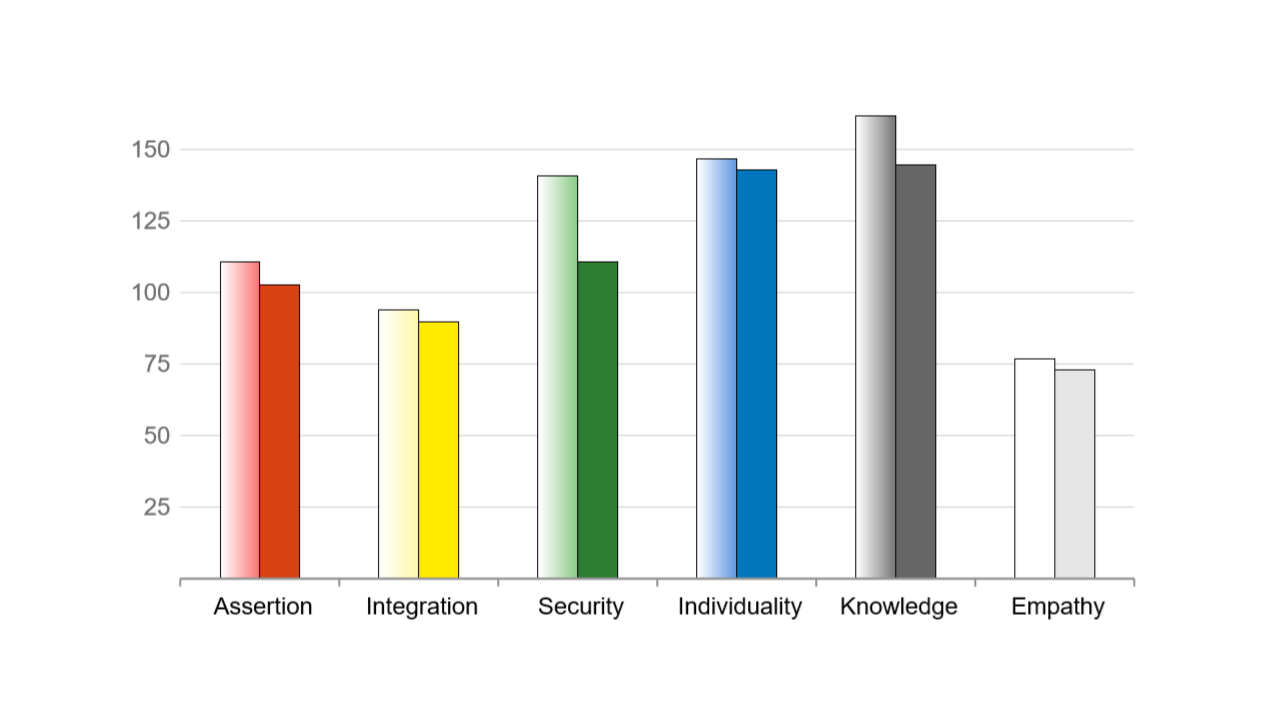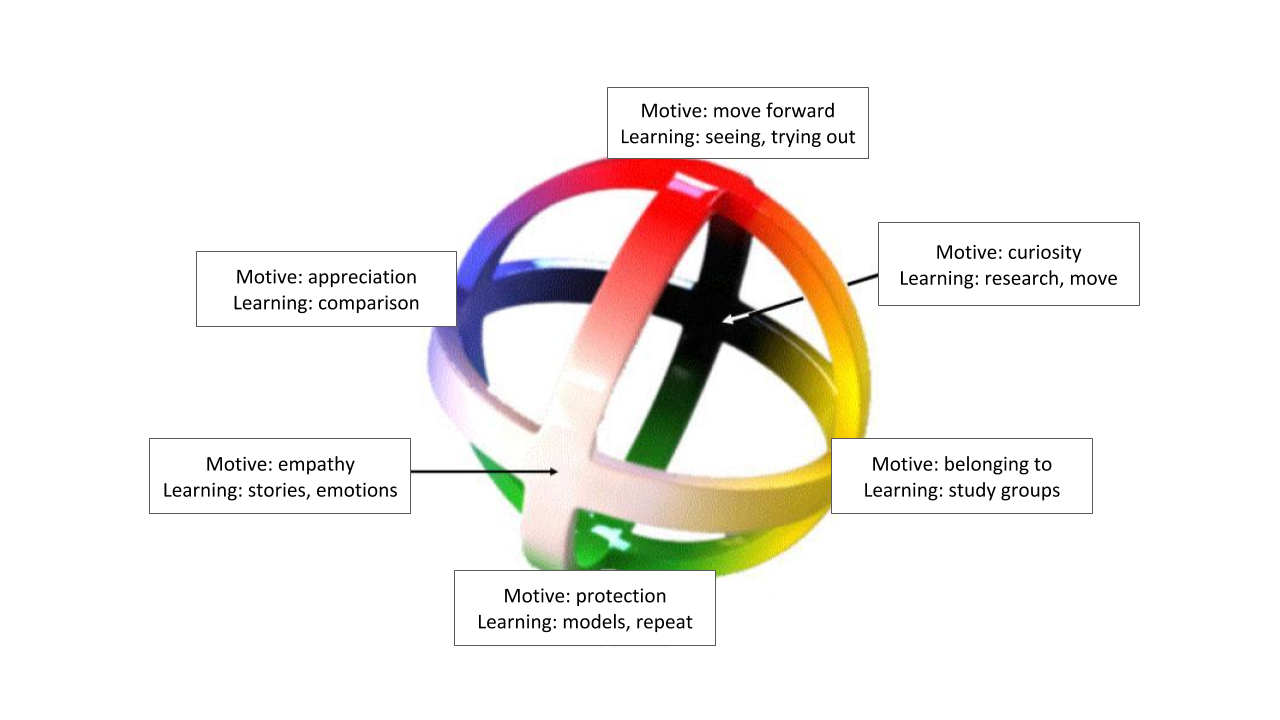Staff development
A company's greatest treasure is its employees. A lot of general and important things have already been written about these "Human Resources". As soon as we deal with a single person on a personal level, we discover that there are hidden powers and abilities that are of great value to this employee and to the company.
What needs to be done to integrate the hidden energies and competencies of each of these personalities into the company's everyday life? In short, we must a) discover these resources and b) allow them to be used by the employee and the company.
It is often rather unconscious assumptions about how to "be" in the company and in the team that lead us to reduce our behaviour to what is supposedly desired. As a result, we become dissatisfied because we do not unfold our possibilities and hide important competencies. We develop a professional personality. As coaches we listen: At home I am different. I'm looking forward to my vacation because I'm finally there... You have to work, but I'd rather... I want to make a career, so I'll do without...
The motivation profiles of individual employees often show striking differences between how one actually is (left, full-surface pillars) and professional role behaviour (right pillars) in relation to the six most important basic needs:

This personality striving for individuality and knowledge (type: researcher) behaves like a conductor in his profession (assertiveness and security). This costs a lot of strength on the enforcement side, because fighting does not suit you at all, and makes you very dissatisfied on the knowledge side, because obviously there is no room for research and intellectual debate.
A conversation with this employee shows that he is firmly convinced that he has to "bend" himself professionally.
In terms of individual personalities, employee development means allowing each individual to be himself or herself. What emotional chains prevent us from doing this, and how can we break these chains?
We Identity
The We identity provides the framework: What "belongs" to this group, and what does "one" not do? What can be communicated and what is not talked about? Such and similar questions are usually not discussed, and a setting of tacitly agreed rules emerges. As long as I am part of this "we", I experience limits. If I want to stay with it, I have to reduce myself or even pretend. I am not myself, but function apparently in the sense of the whole. In such a situation, "inner resignations" are inevitable.
As soon as the questions about our identity are asked offensively in the team, it becomes clear how many unspoken and mostly inaccurate assumptions prevent the individual from bringing in all his strengths and ideas. In practice, there is sometimes a temporary relief, but it is soon replaced by the old system. A viable "we" identity needs continuity and rules. We cannot simply delete something that has been buried in our emotional world for a long time with experiences and thoughts.
So the task is to create new rules for a continuously changing sense of togetherness. There are well-known and proven strategies for this, such as the creation of a shared vision, the agreement of a corporate philosophy accepted by all, the establishment of a corporate ethic and culture. Corporate development project teams, discussion groups and external mentors can help to drive this process of change forward.
Company Profile
Mostly unintentionally, the self-portrayals of companies on their Internet pages give information about the personality of the company. This can be easily evaluated, for example, with a text analysis. The question "Who are we?" can be answered at least roughly. Here is an excerpt from the evaluation on the subject of "values" for a major bank:

This bank wants to be something special and will try to distinguish itself clearly from the competition. Enforcement and integration are average. But obviously the issue of "security" does not play an important role. It can be assumed that the emotional distance between top management and typical bank employees is large.
This individuality-heavy value system is not a problem if a climate of comprehensive integration is cultivated internally. It is desirable when it is clear to all concerned that the bank's "we" identity is large enough to welcome people with a high level of security interest on board.
The principle of diversity teaches us: we need all forms! As an "emotionally multi-cultural" company, we have a common future if we learn to appreciate the otherness of all our colleagues and use their individual resources in our mutual interest.
Resource Database
The structural organisation is an increasingly flexible building in which fixed "walls" are largely dispensed with. Many compulsory tasks and routine functions have now been taken over by the IT systems. Rapidly changing markets offer special opportunities to those companies that are flexible enough to recognize trends at an early stage and to act powerfully with existing resources. Rigid structures with several hierarchical levels and high internal controlling costs are unlikely to be able to do this. Those who want to achieve something derive ways and tasks from the situation and the goal that are to be distributed among the existing employees in the best possible way. In addition one should know whose personal characteristics fit best to the task at hand.
IPM derives different characteristics from the motivation profiles, but also from the analysis of texts, which are available in a database for later preselections. In addition to professional skills and experience, a high degree of efficiency can be expected if, in comparison to the task of an employee, the fit in these 24 categories is as large as possible.
Implicit Motifs
Performance - wanting to create something special
Power - control things
Contact - Creating sustainable relationships
Basic Needs
enforcement - a bit fast
Integration - Involving stakeholders
Safety - Ensure Sustainability
Individuality - Special features and quality allow
Orientation
Knowledge - research and analyze
Empathy - to empathize with scenarios and consequences
Past - learn from experience
Present-attentive - attentively notice changes
Future - anticipate (anticipate) what will happen
Level
Facts - Concentration on "things" (body, fashions, etc.)
Emotions - Focus on "feelings" (soul, relationships, etc.)
Sense - Concentration on "ideas" (mind, culture, superordinate
relationships)
Preferences
Sensing - perceiving reality with the senses
Intuition - having an idea of complex relationships
Thinking - thinking through reality rationally
Feeling - pay attention to mostly unconscious sources of experience
Focus
continuity - make sure that important things remain
Logic - check whether decisions comply with the cause-effect
principle
feeling - use the "gut feeling" as a guide
Process - to observe the development critically
Result - being focused on the target
For the task/employee comparison, the task descriptions can be evaluated with the text analysis. All data can then be used for the target/actual comparison.
The Learning Employees
Everyone learns from birth, and that usually never ends. But the willingness to learn drops towards zero if the material that is offered to us or the way it is to be conveyed does not concern us emotionally.
Every person has his own way of motivating himself for new knowledge and skills and of appropriating them.

The database of resources therefore also has a lot to offer the personnel development department.